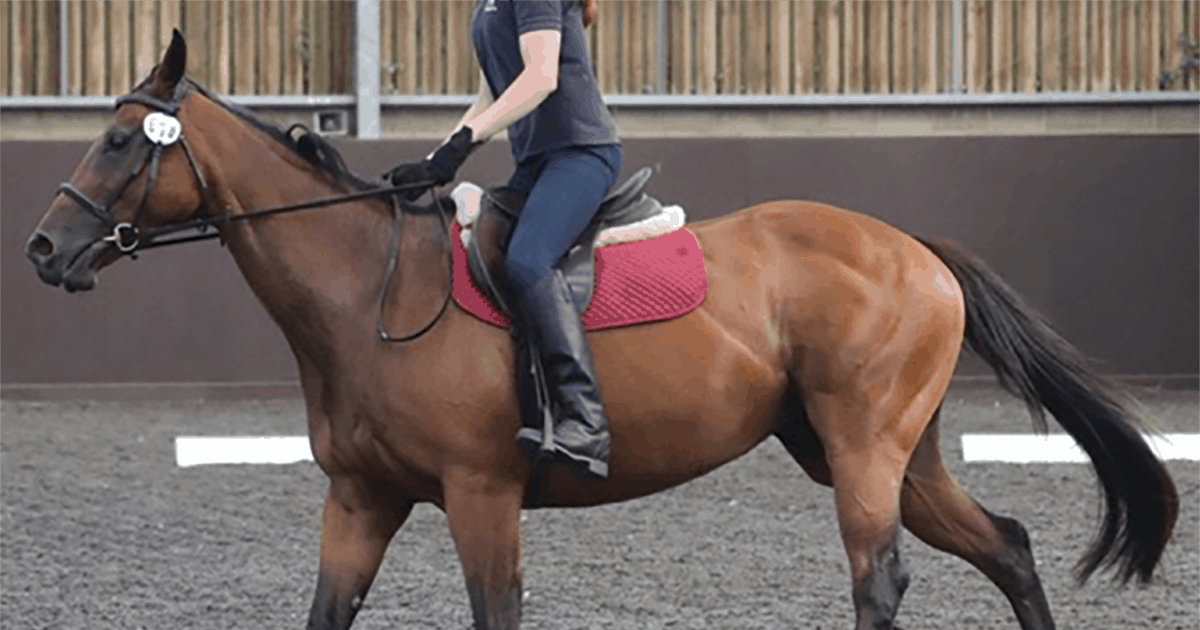Horse rider weight gain.
It happens to the best of us. We think we’re maintaining our weight, trying to get fit, hoping we don’t look too bad in our riding breeches and especially not weighing down our poor horses. Then come the holidays. Family events. Work parties, memorable nights on the town…. Then we step on the scales. Extra kilos, ugh.
As we work to drop the weight off again, we don’t have to scratch equitation from our sports plan. Science suggests those few extra kilos won’t hurt our horses—and in fact, many of us can probably gain 10 kilos or more without consequences for our mount.
“Within a set weight ratio range and during light to moderate exercise, acute increases in rider weight did not induce changes in the stress parameters we analysed in our study,” said Janne Winther Christensen, PhD, of Aarhus University, in Tjele, Denmark. She presented her group’s research project during the 15th annual conference of the International Society for Equitation Science (ISES), held last August in Guelph, Ontario, Canada.
The effect of rider weight has been studied previously, with results showing that rider-weight ratios of between 25% and 30% could cause a horse to have asymmetric gaits—suggesting the load is getting too heavy, according to Christensen.
Rider-weight ratio is the measure of the rider’s body weight compared to the horse’s body weight. For example, a 600-kg horse carrying a 50-kg rider plus 10 kg of tack would have a rider-weight ratio of 10%.
Other studies have focused on adding more weight to the horse’s back, or using lighter versus heavier riders—which would reveal the horses’ reactions to different riders regardless of weight difference. However, Christensen and her fellow researchers designed a test that would allow the same rider to “gain” weight; the scientists could then study the differences in that single horse-rider pair and determine the unique effect of added weight to the rider, Christensen explained.
The researchers had the 20 female study riders “gain” weight by slipping 1-kg metal weights into weight pockets on a body vest, adding up to 15% and 25% of each rider’s normal body weight. “We wanted to see what would happen with the weight added to the rider’s body, moving dynamically with the rider in the most realistic way possible,” Christensen told Horses and People.
Each of the riders rode her own regular mount (mostly Warmbloods and sport ponies) without weights and with the two levels of added weight. Researchers observed the horses as they were lunged and ridden with the various weight treatments in a basic three-gait dressage test, over a period of several days. They looked for behavioural signs of stress following a behaviour ethogram (tail swishing, mouth opening, ears laid back, etc.), and they monitored the horses’ salivary cortisol levels and heart rate.
They found that, despite increasing the rider-to-horse weight ratios from a range of 12 to 19%, to a range of 15-23%, the horses appeared unaffected by the increases, Christensen said. Salivary cortisol levels were slightly increased with increased weight, but not enough to be significant. Behaviour only differed from one horse to another, but not within the same horse. And heart rates were very similar despite the horse rider weight gain.
“We expected the heart rate to increase, just as a physiological response alone to the effort of carrying the extra weight,” Christensen explained. “But actually there was no real effect on their cardiac rates.”
These results don’t mean riders can just ride without concern for their weight, however, she added. Adding weight to a horse/rider pair with an already elevated rider-weight ratio could yield different results. And long-term effects haven’t been studied.
“These are short-term findings measured at a relatively low exercise intensity, and what happens at higher intensities, during different disciplines such as show jumping, in addition to long-term consequences, are worth investigating as well,” Christensen said.
When in doubt, riders can keep exercise levels moderate and/or give the horse regular breaks, she said.


















